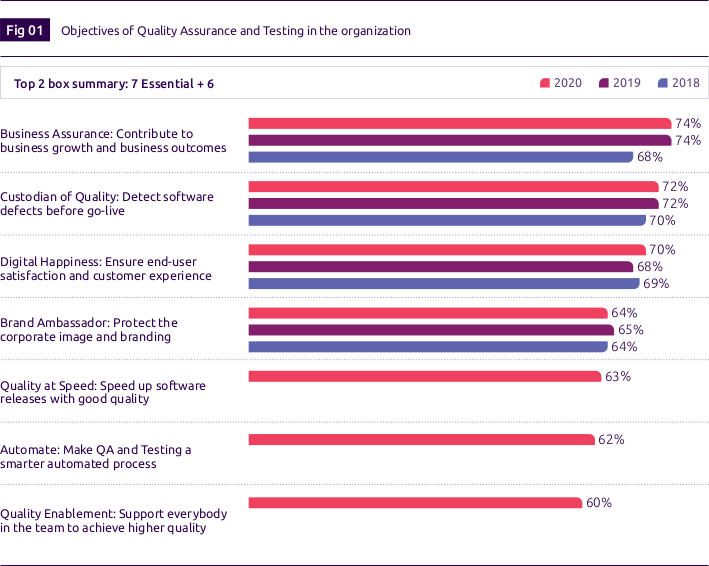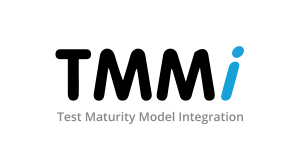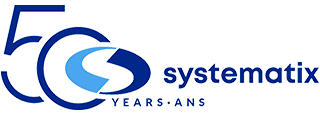
By creating well equipped and streamlined QA practices, organizations can alleviate quality and productive value concerns at every level of project delivery. In the following article, you will discover how the TMMi approach can help to improve your global QA impact and effectiveness.
Organizations always aim to deliver quality products, but even today, Quality Assurance (QA) in information technology (IT) Projects is often underestimated, and frequently the first things to be reduced when budget constraints occur.
It is often said that safety is everyone’s business. We should also say that Quality Assurance must also be everyone’s business, both in project management and business lines, from design to go-live, as well as for the break-in period (post go-live).
In some cases, there may be poor segregation of the environments necessary for the implementation of the different phases of a project. This occasionally results in differences in the code’s version, between environments. “Garbage In / Garbage Out” is an analogy that applies easily in such a case: if the wrong version is used in the first place, this error will generate several problems later!
A valuable process
Most organizations are aware of this kind of issue and will ask their teams to prepare a plan to avoid these situations. The large-scale adoption of the Agile approach, to obtain faster feedback or the DevOps practice for managing environments, also brings their share of challenges when it applies to Quality Assurance. These approaches are associated with change resistance and other organizational impacts and cannot replace a proven sound quality assurance approach on their own.
In the World Quality Report of 2019-2020 (published by the French consulting company Capgemini), we can see that from 2016 to 2019, Senior Management has placed a growing importance on setting Quality Assurance targets. This level of interest has been maintained in the latest report (2020-2021) and three new interest criteria have been added:
Management vs. QA - 2019-2020

Management vs. QA - 2020-2021 (©Capgemini)

With the introduction of methodological changes such as the Agile or DevOps approach, it becomes essential to have an effective plan to properly target efforts, and the processes to ensure quality in the delivery of projects.
What is more, very often these approaches do not happen alone and are introduced as part of a digital transformation, or some other major project. In this context where several changes intersect, it goes without saying that a well-planned Quality Assurance program becomes absolutely necessary.
The TMMi repository

This is exactly the goal of the TMMi (Test Maturity Model Integration) repository. Although still relatively new in North America, the TMMi repository allows organizations to define the plan to achieve the desired level of Quality Assurance.
TMMi establishes:
- A list of processes to be put in place (e.g., testing policy and strategy, testing environment);
- Goals to be defined and measured to be effective;
- Practices to be defined while establishing managers and collaborators in each case.
The TMMi repository can also be seen as a springboard to build, or sometimes to rebuild, a culture of Quality Assurance for an organization or for a team.
TMMi: The Maturity Model of Quality Assurance
TMMi: Building a QA culture
TMMi: Rebuilding the QA culture
Motivating teams

The implementation of the TMMi model is also a great way to motivate teams. Using it, allows your team to improve, both in relation to their work in-house, but also by competing and thus challenging themselves to become better.
In other words, the TMMi model is an exceptional tool for transforming organizations to improve the quality of its software development. It also goes without saying, that it is important that you have a Quality Assurance culture in place, and/or that you should never start a specific testing project without a testing approach that is accessible and adaptive. It will allow you to achieve tangible results.
Using the TMMi model, it is possible to identify the main friction points that have an impact on the quality of your deliverables and thus quickly add appropriate checkpoints. A ‘Use Case’ is always an effective way to illustrate this kind of problem.
Achieving project success by improving the quality of a supplier
Recommendation
Setting up a new Quality Assurance standard, such as the TMMi, is not always a simple and easy process. For some, the model might at first glance seem too strict, or you may simply disagree with its edicts.
It should therefore be recommended by resources with the requisite expertise, (or at a minimum, to be trained in the TMMi standard), before embarking on a construction or transformation project.
As always, you cannot determine where you want to be, if you don’t know where you are. Therefore, an audit of your current situation will help to determine the level of maturity from which you start. From there, by utilizing experts, it will be easier to determine the level you want to eventually reach, and then define an adequate plan to achieve it. This will prevent you from making an inappropriate investment or getting lost in changes at all levels of the business without specific and measured goals.
Conclusion
In conclusion, Quality Assurance is fundamental to the success of a project. The implementation of a standard like TMMi, will help you organize and structure this important part of the delivery, mitigating adoption challenges and missteps. As Masaaki IMAI said so well:
Where there is no standard, there can be no improvement. For this reason, standards are the basis for both maintenance and improvement.
Are you inspired by this article? Would you like to know more about this? Do not hesitate to contact us. We can guide you to success on your Quality Assurance initiatives.

About the author
Said Amouri
Said Amouri is Director and Mentor of the Systematix Quality Assurance Center of Excellence. He holds a Certified “Foundation” and “Advanced” level of Test Manager from ISTQB. He is also TMMi Professional certified, allowing him to measure and advise organizations on their level of maturity in relation to their quality assurance and testing practice.
Cette page est également disponible en Français (French)
